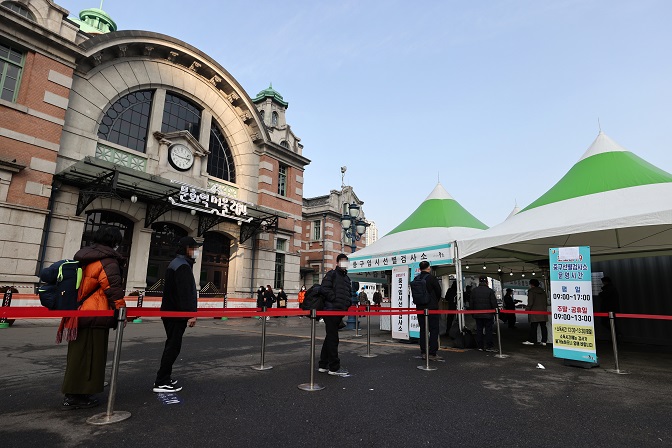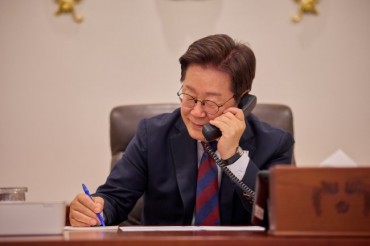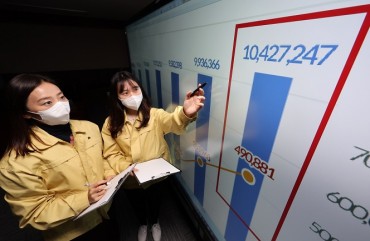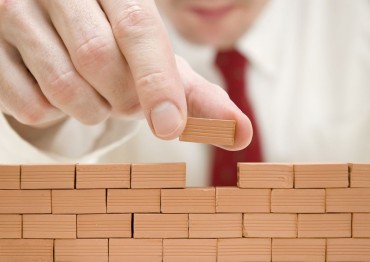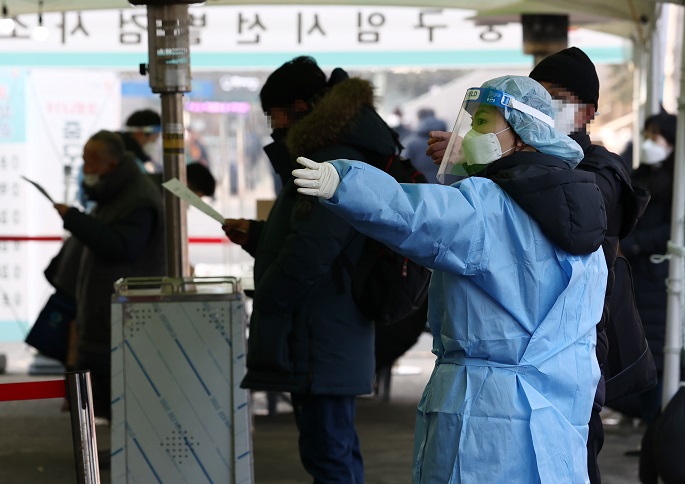
A health worker clad in protective gear gives directions to a citizen at a makeshift virus testing clinic in Seoul on Feb. 12, 2021. (Yonhap)
SEOUL, Feb. 12 (Korea Bizwire) — South Korea’s daily new coronavirus cases retreated Friday, apparently due to fewer tests amid the Lunar New Year holiday, but health authorities are staying vigilant over a potential uptick after the traditional holiday.
The country reported 403 more COVID-19 cases, including 384 local infections, raising the total caseload to 82,837, the Korea Disease Control and Prevention Agency (KDCA) said.
Friday’s daily caseload was sharply down from 504 cases reported the previous day, when the number of new cases surged to a 15-day high.
The drop was apparently due to fewer virus tests as health authorities conducted only 23,361 tests on Thursday, down 16,624 from the previous day.
The third wave of COVID-19 here reached its peak on Dec. 25, with the daily tally reaching 1,240, but has been showing a downward trend since.
Recently, the daily caseload has been moving in the 300-400 range due to continuing cluster infections from unauthorized religious education facilities in the central and southwestern regions.
As of 9 p.m. Friday, there were 345 additional cases, down 34 from the same time Thursday, according to the health authorities and local governments.
Daily tallies are counted until midnight and announced the next morning.
Of the new cases, 259, or 75.1 percent, were reported in the capital area, while 86 were in the rest of the country.
Health authorities are trying to further slow down new infections after the Lunar New Year holiday, which kicked off Thursday for a four-day run including the weekend.
Many Koreans travel across the country to visit their relatives and families during the holiday, but this time, health authorities have urged people to stay at home.
To curb virus infections, the country has kept in place tight social distancing guidelines throughout the holiday, including a nationwide ban on gatherings of five or more people.
Health authorities are scheduled to announce on Saturday whether they will ease the current virus curbs after gauging the trajectory of the pandemic.
Small business owners and merchants have been complaining about the country’s strict antivirus measures, including a curfew that bans restaurants and cafes in the greater Seoul area from operating after 9 p.m.
South Korea operates a five-tier alert system. The capital area is currently under the second-highest level of 2.5, while Level 2 is imposed in other areas.
Of the 384 locally transmitted cases, Seoul accounted for 155 cases, and the surrounding Gyeonggi Province took up 103.
Incheon, west of Seoul, had 41 new cases. The greater Seoul area accounts for around half of the nation’s 51 million population.
Among virus clusters, a religious foundation known as Seungri and its affiliated education institution in Bucheon, west of Seoul, reported 22 more confirmed cases for a total of 123, according to health authorities.
A private network of acquaintances in Seoul’s Yongsan Ward, based on churches and social gatherings, reported eight more cases confirmed among them, bringing its caseload to 55.
The number of cases tied to a church and its educational facilities in Gwangju increased by two to 231.
There were 19 cases from overseas, raising the total number of imported cases to 6,659.
Of the newly imported cases, seven were from the United States, followed by Jordan and Pakistan with two each.
The country added 11 fatalities, upping the virus death toll to 1,507. The fatality rate was 1.82 percent.
The number of seriously or critically ill COVID-19 patients came to 161, down nine from a day earlier.
The total number of people released from quarantine after making full recoveries was 72,936, up 298 from a day earlier, with 8,394 people being isolated for COVID-19 treatment, up 94 from a day ago.
(Yonhap)


